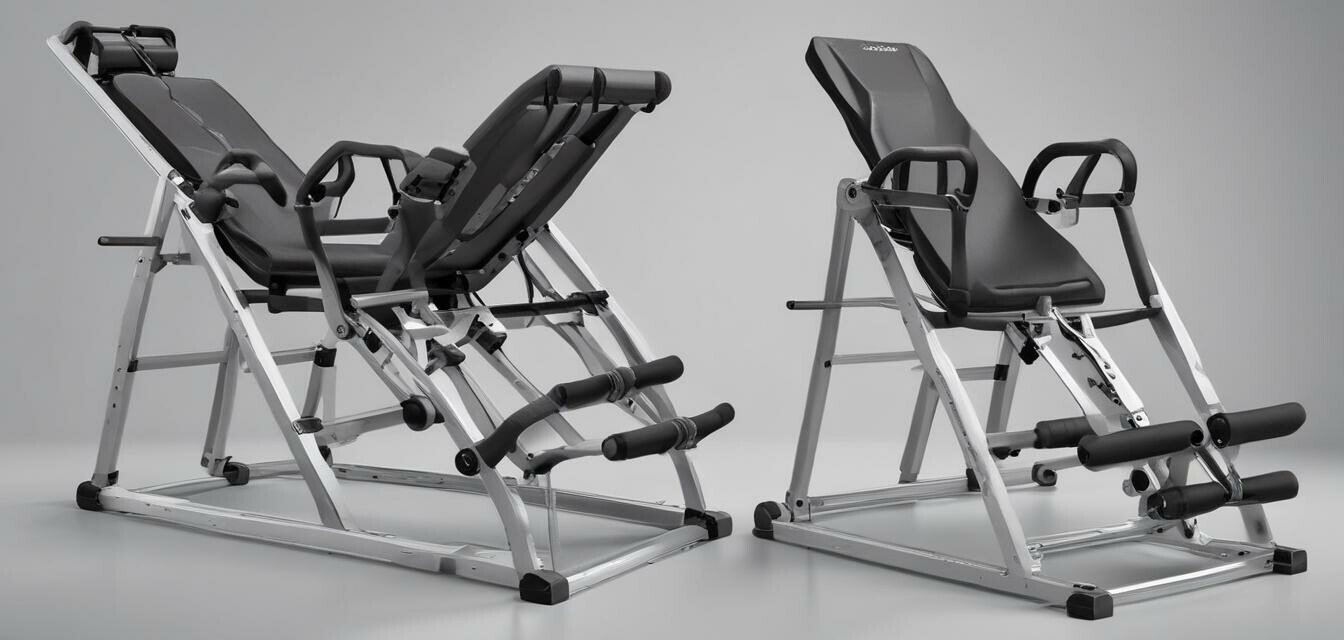
Heavy Duty vs. Standard Inversion Tables: Find Your Fit
Key Takeaways
- Heavy duty inversion tables have higher weight capacities, making them suitable for larger users.
- Standard inversion tables are generally lighter and may have fewer features.
- Understanding durability and intended use is crucial in making your choice.
- Both types offer various adjusting mechanisms and comfort levels.
- Consider your personal fitness goals when deciding which type to purchase.
Choosing between heavy duty and standard inversion tables can feel overwhelming, especially when you are uncertain of which characteristics to prioritize. By understanding the differences in design, weight capacity, durability, and intended use, you can make a more informed decision that aligns with your personal needs. This guide will help you sift through these options and showcase what to look for in an inversion table.
Understanding Inversion Tables
Inversion tables are devices designed to help users relieve back pain and improve flexibility. They work by allowing users to invert their bodies while securely strapped in, using gravity to elongate the spine and decompress the vertebrae. This process can lead to increased blood flow, reduced muscle tension, and improved posture. However, the effectiveness of these tables can vary significantly between heavy duty and standard models.
Weight Capacity Comparison
| Type of Table | Typical Weight Capacity | Ideal User Weight |
|---|---|---|
| Heavy Duty Inversion Table | Up to 350 lbs | Users 250 lbs and higher |
| Standard Inversion Table | Up to 250 lbs | Users 200 lbs and lower |
Durability and Construction
When investing in an inversion table, durability plays a crucial role. Here's how heavy duty and standard inversion tables typically compare:
- Materials: Heavy duty models often use reinforced frames and thicker materials to ensure stability and longevity.
- Frame Design: A wider base in heavy duty tables enhances safety and supports larger users.
- Adjustable Parts: Both types usually feature various adjustable components, but heavy duty tables may come with added enhancements for user comfort.
Intended Use and Benefits
Understanding what you'll use the inversion table for is vital before making a purchase. Consider the following:
- Rehabilitation: If you're recovering from an injury and need a sturdy table for regular use, a heavy duty option might be best.
- Exercise Variety: If you are an advanced user looking to perform various exercises, heavy duty tables offer more versatility.
- Casual Use: For light users or casual stretching, a standard table may adequately meet your needs without the extra cost.
Price Considerations
Before making your purchase, budget is another factor to consider:
| Type of Table | Price Range |
|---|---|
| Heavy Duty Inversion Table | $250 - $500 |
| Standard Inversion Table | $100 - $300 |
Conclusion
Ultimately, the choice between a heavy duty and standard inversion table boils down to your individual needs. If you require enhanced durability, higher weight capacity, or plan on using the table regularly, a heavy duty model may be your best option. However, if your goals are more casual, a standard inversion table is likely sufficient.
Pros of Heavy Duty Inversion Tables
- Higher weight limits for broader user compatibility.
- More durable and stable construction.
- Enhanced comfort features for prolonged use.
Cons of Heavy Duty Inversion Tables
- Higher price point.
- Often heavier and less portable.
Tips for Beginners
- Start with a gentle angle before progressing to full inversion.
- Consult resources on safe inversion methods.
- Consider a table with adjustable safety features.
For more information on inversion tables, check out our [Buying Guides](/blog/buying-guides) or explore specific [Back Stretching Devices](/products/back-stretching-devices) to complement your inversion regimen.